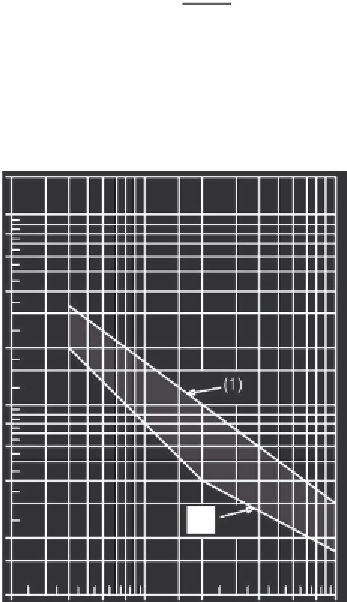Civil Engineering Reference
In-Depth Information
simply supported bridges with only longitudinal line beam or simple plate
behavior with negligible skew effects on rigid supports. A dynamic analysis
is required where the frequent operating speed of a real train equals a reso-
nant speed of the bridge. For bridges with a first natural frequency
n
0
within
the limits given by
Figure 3.15
and a maximum line speed at the site not
exceeding 200 km/h, a dynamic analysis is not required. For bridges with
dynamic analysis is required. For a simply supported bridge subjected to
bending only, the natural frequency may be estimated using the following
formula as specified in EC1:
17
:
75
d
0
n
0
¼
p
ð
3
:
19
Þ
where
n
0
is in Hz and
d
0
is the deflection at midspan due to permanent
actions in millimeters and is calculated, using a short-term modulus for
n
0
(Hz)
150
100
80
60
40
20
15
(1)
10
8
6
4
(2)
2
1.5
1.0
L
(m)
2
4
6
8 10
15 20
40
60 80 100
Key
(1) Upper limit of natural frequency
(2) Lower limit of natural frequency
Figure 3.15 Limits of bridge natural
frequency n
0
(Hz) as a function of L (m)

Search WWH ::

Custom Search